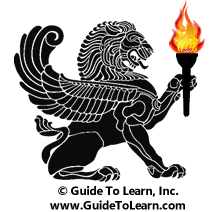Mastering MFC Advanced Development Using Microsoft Visual C++
This course discusses Mastering MFC Advanced Development Using Microsoft Visual C++
- *
Select duration. Access ends after the period.
Sneak peek inside!
Course Length: 05 Hours 51 Minutes 36 Seconds
The paid version of this course contains videos on the following topics:
Course Outline
Chapter 1: Introduction to Microsoft Visual C++ 6.0
Describe the features of Visual C++ and MFC Library.
List the major enhancements made to Visual C++ and MFC in Visual C++ 6.0.
Create, build, and run an MFC application.
Chapter 2: Debugging and Error Handling
Use the Visual Studio Debugger to identify and eliminate errors.
Use the Edit and Continue feature to simplify debugging.
Write functions with built-in error-handling code.
Use the C++ exception-handling technique to handle runtime exceptions.
Describe and use the various types of MFC exception classes.
Chapter 3: Enhancing User Interface Features
Create dynamic menus, cascading menus, and owner-draw menus.
Place dockable toolbars in an application.
Include graphics and additional panes in status bars.
Use and customize common dialog boxes.
Extend dialog data validation (DDV).
Create tabbed dialog boxes and property sheets.
Invoke and display modeless dialog boxes.
Create dialog bars and rebars.
Chapter 4: Implementing View Classes
Describe the purpose of documents, views, templates, and frames within the document/view architecture, and how they interact.
Describe the various types of view classes in MFC.
Implement applications that use views derived from the CView class.
Create SDI and MDI applications with multiple views.
Implement interrelated views in an application.
Chapter 5: Using Controls
Add Windows common controls, Internet Explorer 4.0 common controls, ActiveX controls, and controls supplied by the MFC library to MFC applications.
Chapter 6: Creating ActiveX Controls
Describe the advantages of the ActiveX control technology.
Describe the elements of an ActiveX control.
Explain the features of the ControlWizard in creating an ActiveX control.
Describe the primary tasks of an ActiveX control container.
Explain the interaction between an ActiveX control container and an ActiveX control.
Use ControlWizard to create skeletal code for your ActiveX control.
Use ClassWizard to define properties, methods, and events for your ActiveX control.
Chapter 7: Using OLE DB Templates for Data Access
State the benefits of using the OLE DB technology for data access.
Describe the role of OLE DB components in data access.
Explain the architecture of provider and consumer template classes.
Build consumer applications using OLE DB consumer templates.
Chapter 8: Creating ADO Database Applications
Describe the role of ADO in applications that require database access.
Describe the ADO object model.
Implement ADO in MFC applications using data controls.
Implement ADO in MFC applications using the Data Bound Dialog.
Perform queries and searches on databases and rowsets.
Chapter 9: Building Internet Applications
Describe the Internet framework.
Describe the different types of Internet applications.
Create MFC-based applications that invoke Internet Explorer.
Use the Web Browser control in MFC applications.
Create MFC applications that use the WinInet classes to communicate across the Internet.
Create MFC applications that use the synchronous and asynchronous WinSock classes.
Course Completion
Upon completing this course, students will be able to:
Describe the Visual C++ 6 development environment.
Describe the new MFC features introduced with Visual C++ 6.
Debug MFC applications.
Create robust applications that handle errors and exceptions.
Enhance the user interface features of an application by adding dynamic menus, graphical status bars, rebars, and dialog bars.
Implement view classes.
Use Microsoft Windows® operating system controls, Internet Explorer controls, and ActiveX™ controls in MFC applications.
Use ActiveX and component object model (COM) objects in MFC.
Create ActiveX controls.
Create applications that access both DBMS and non-DBMS data sources by using OLE DB templates and ActiveX Data Objects (ADO).
Create MFC applications that communicate across the Internet.
Prerequisites
This course assumes that the student has experience and knowledge in the following areas:
C++ programming skills
Some programming experience with MFC Library
Familiarity with document/view architecture and non-document/view architecture
Windows architecture concepts including event-driven programming, processes, virtual memory models, threading, multitasking, and messaging
Using the resource editors, tools, and debugger in the Microsoft Visual Studio™ development environment
Familiarity with Microsoft Internet Explorer
Creating, modifying, compiling, and running projects in Visual Studio
Familiarity with object-oriented programming (OOP) terminology and concepts such as objects, properties, and methods
Taking Course 1011 before this course is recommended.
